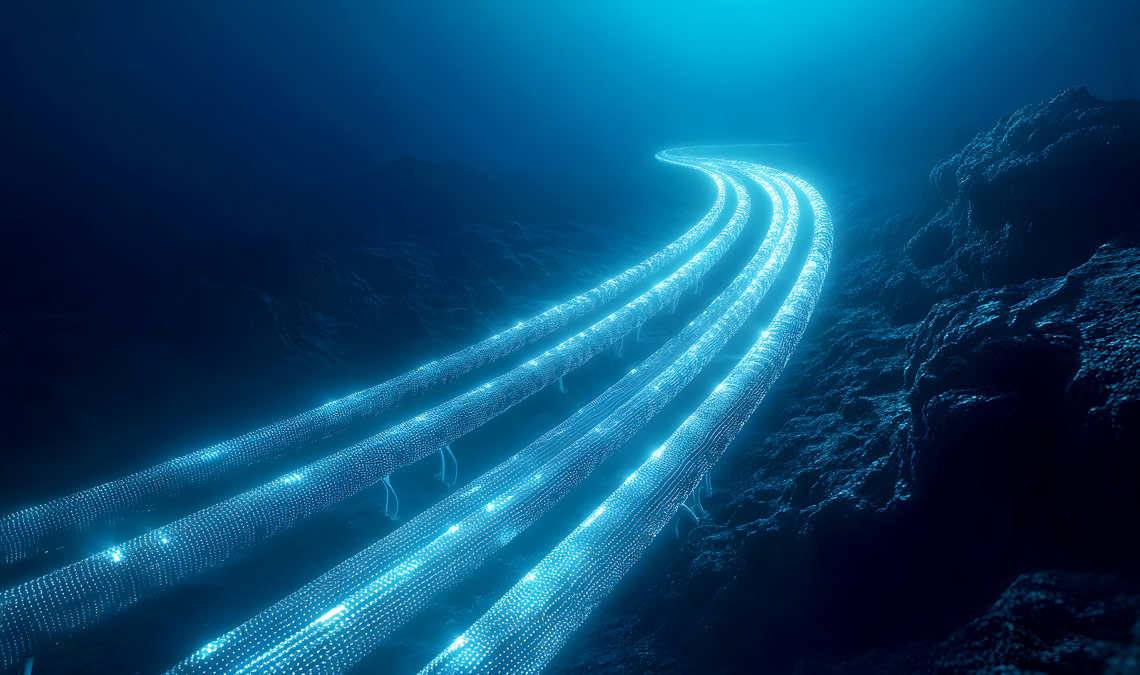Submarine cables are the backbone of global connectivity, facilitating essential communication and power transmission across oceans and waterways. Since the first transatlantic cable was laid in the 19th century, submarine cable technology has undergone significant advancements. This editorial explores the history of submarine cables, the engineering behind their installation, and future innovations shaping this crucial infrastructure.
A Brief History of Submarine Cables
The first submarine cable was laid in 1850 between England and France, but it was the successful installation of the Transatlantic Telegraph Cable in 1858 that revolutionized global communications. Early submarine cables used gutta-percha insulation and were primarily designed for telegraphy. By the late 20th century, fiber-optic cables replaced copper-based communication lines, dramatically increasing data capacity and efficiency. Today, submarine cables form the backbone of the global internet, carrying over 99% of all international data traffic.
The Role of Submarine Cables in Global Infrastructure
Submarine cables serve three primary applications: short river crossings, deep-sea interconnections, and offshore oil and gas field operations. Each application presents unique engineering and environmental challenges that require specialized design and materials.
- River Crossings: Typically spanning a few kilometers, these cables are mechanically reinforced to withstand potential damage from shipping and environmental factors.
- Deep-Sea Installations: Used for intercontinental power transmission, these cables traverse extreme depths and must endure harsh marine conditions, including strong currents and seabed instability.
- Offshore Energy Networks: Connecting platforms and seabed modules, these cables are crucial for power and data transmission in oil and gas fields, with installations expected to reach even greater depths in the future.
Engineering the Installation of Submarine Cables
Laying a submarine cable is a highly complex process requiring meticulous planning and state-of-the-art technology. The installation involves:
- Surveying the Seabed: Hydrographic and geophysical surveys determine the optimal cable route, identifying obstacles such as underwater ridges, tectonic activity zones, and existing pipelines.
- Cable Laying Vessels: Specially equipped ships deploy cables using dynamic positioning systems to ensure precise placement on the seabed.
- Cable Protection: Depending on seabed conditions, cables may be buried or armored to protect against external threats such as fishing gear, anchors, and seismic activity.
- Maintenance and Repair: Although designed for long-term durability, submarine cables occasionally require repairs. Remotely operated vehicles (ROVs) are used for deep-sea maintenance to retrieve and replace damaged sections.
Key Engineering Considerations
Electrical Performance
- Ensuring high electrical safety to minimize failures and costly repairs.
- Minimizing transmission losses over long distances.
- Designing cables in continuous lengths to avoid the need for mid-sea joints.
Mechanical Resilience
- Withstanding extreme pressures and bending stresses during installation.
- Providing robust armoring against fishing activities and ship anchors.
- Maintaining torque balance to prevent uncontrolled twisting during deployment.
Environmental Stability
- Adequate weight and seabed anchoring to prevent movement due to ocean currents.
- Effective corrosion protection for prolonged service life.
- Integrating optical fiber cores for real-time monitoring of strain and temperature.
Innovations in Submarine Cable Design
Recent advancements in materials and manufacturing processes are enhancing the performance and longevity of submarine cables. Polymeric insulation is increasingly being used in control and instrumentation cables, while high-voltage direct current (HVDC) cables are being optimized for intercontinental power transfer.
- High-Voltage Capabilities: Emerging insulation technologies enable cables to operate at voltages exceeding 600 kV, improving efficiency and reducing transmission losses.
- Integration with Renewable Energy Projects: Offshore wind farms and intercontinental renewable energy networks are driving demand for high-capacity submarine cables.
- Advanced Installation Techniques: New cable-laying vessels and automated burial systems are improving installation efficiency and reducing environmental impact.
Conclusion
From their early days as telegraph cables to today’s fiber-optic and high-voltage power transmission networks, submarine cables have played a pivotal role in global infrastructure. As new challenges arise, ongoing research and development will be vital in advancing cable durability, efficiency, and sustainability. The future of submarine cable systems lies in innovative materials, improved monitoring capabilities, and integration with emerging energy technologies. The next decade promises significant breakthroughs that will further enhance global connectivity and resilience.

